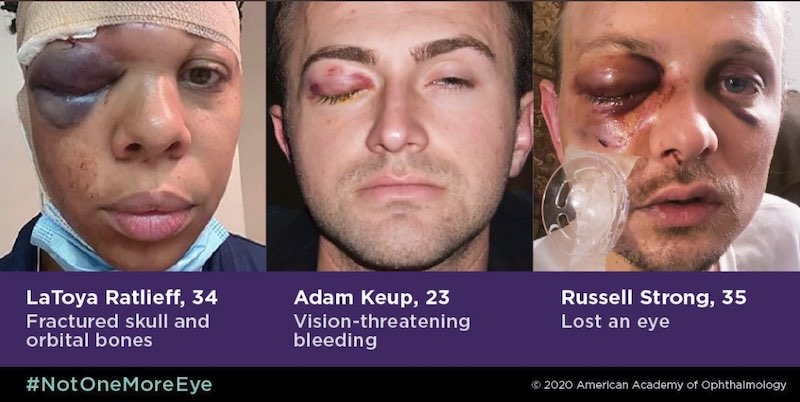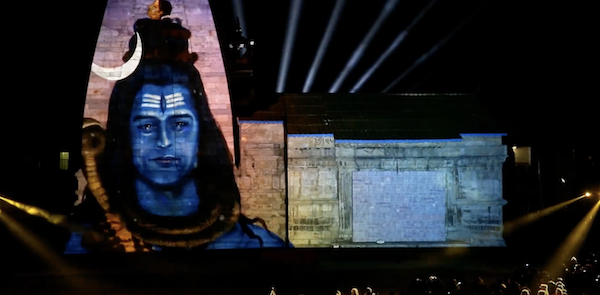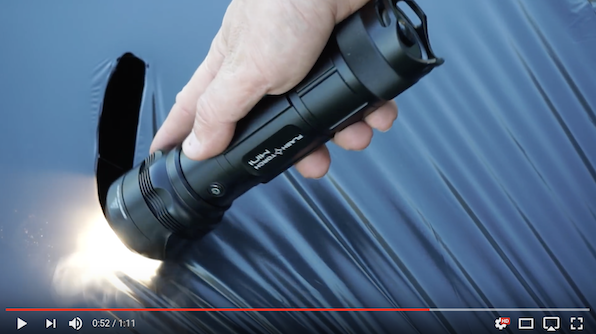Home
A comprehensive resource for safe and responsible laser use
US: 30 eye injuries May-July 2020 caused by police (not a laser)
The report focuses on kinetic impact projectiles (KIPs) such as so-called rubber bullets, baton bean-bag rounds, and tear gas canisters fired directly at protesters, journalists and bystanders. It specifically excludes chemical injuries such as from tear gas.
The effect of KIPs on the eye, according to the group, "nearly always causes total blindness in that eye, due to rupture of the globe (eyeball) as well as trauma to nearby structures."
The report notes that:
PHR’s database contains only incidents documented in traditional and social media. The tally depends on individuals to self-report their experiences, on journalists to identify and document injuries, or on the legal system to present these instances in the course of litigation. For these reasons, this count of injuries is believed to be only a fraction of the total number of people shot in the head and neck by U.S. law enforcement during the protests since May 2020….
In addition to the May 26 - July 27 2020 reports, the group also cited a "systematic review … of medical literature on kinetic impact projectiles over the past 25 years." This review found 1,925 injured people, 53 of whom died and 294 people with permanent disabilities. Further, "Permanent vision loss was the most common permanent disability."
The PHR report was cited in a May 20 2021 Narratively story (also published September 2 2021 at The Guardian) by photojournalist Wil Sands, whose right eye was blinded by a tear gas canister outside the White House on May 30 2020. Sands contacted others whose eyes were damaged by police using "less lethal weapons", told their stories, and has created an internet group for persons blinded by law enforcement.
Note: This story is part of our occasional coverage of eye injuries at protests which were not caused by a laser. This is because the number of actual or claimed laser eye injuries at protests (generally inflicted on police or security forces) is vastly outnumbered by actual or claimed eye injuries to protesters, journalists and bystanders (generally caused by police or security forces). In our view, no one should aim a laser or projectile at anyone's eye or head during protests, demonstrations and civil unrest.
US: Journalist describes being hit in eye with suspected pepper ball round in Portland (not a laser)
Trip Jennings had worked at protests around the world. His photos and videos have appeared in National Geographic and PBS.
In Portland, he said he was walking away following a dispersal order. He had his camera above his head so security forces could see he was a journalist, "but as soon as I turned around just a little bit, they shot me in the face…. I got hit right in the eye. I remember seeing the lens of my gas mask shatter and then closing my eye and just blood inside of my mask." He believes agents shot him with a pepper ball.
He did not lose vision in the eye which was shot.
From CNN and Business Insider
Note: This story is part of our occasional coverage of eye injuries at protests which were not caused by a laser. This is because the number of actual or claimed laser eye injuries at protests (generally inflicted on police or security forces) is vastly outnumbered by actual or claimed eye injuries to protesters, journalists and bystanders (generally caused by police or security forces). In our view, no one should aim a laser or projectile at anyone's eye or head during protests, demonstrations and civil unrest.
US: Report describes 12 severe eye injuries during late May 2020 protests (not a laser)
According to the Post, "in three instances, video evidence undermines official accounts of what happened." The report said four additional people were also partially blinded by police during the week that included May 30.
From the Washington Post
Note: This story is part of our occasional coverage of eye injuries at protests which were not caused by a laser. This is because the number of actual or claimed laser eye injuries at protests (generally inflicted on police or security forces) is vastly outnumbered by actual or claimed eye injuries to protesters, journalists and bystanders (generally caused by police or security forces). In our view, no one should aim a laser or projectile at anyone's eye or head during protests, demonstrations and civil unrest.
US: Ophthalmologists cite 20 eye injuries from U.S. protests (not a laser)
- 7 persons lost an eye, "with additional patients undergoing surgery to save their eye"
- Persons who lost an eye ranged in age from 21 to 37 years
- Persons with an eye injury ranged in age from 16 to 59 years
- Injuries were caused by rubber bullets, bean bag rounds, pepper balls, a tear gas canister, and a corneal injury from a taser.
In addition, the AAO press release had links to stories about eye injuries during protests in Kashmir, Chile and Hong Kong.
On June 3 2020, AAO issued a statement condemning rubber bullet usage, and giving tips on eye protection from projectiles and from tear gas. They noted that tear gas "typically doesn’t cause irreversible eye injuries, but tear gas has caused serious eye injuries, including hyphema, uveitis, necrotizing keratitis, coagulative necrosis, symblepharon, secondary glaucoma, cataracts and traumatic optic neuropathy and loss of sight."
A day later AAO provided information, social media handles, photos and graphics in a post called "Help Us Stop Rubber Bullets Before They Blind More People."

Graphic tweeted by AAO
Note: This story is part of our occasional coverage of eye injuries at protests which were not caused by a laser. This is because the number of actual or claimed laser eye injuries at protests (generally inflicted on police or security forces) is vastly outnumbered by actual or claimed eye injuries to protesters, journalists and bystanders (generally caused by police or security forces). In our view, no one should aim a laser or projectile at anyone's eye or head during protests, demonstrations and civil unrest.
Gaza Strip: WHO says 21 persons lose vision during 21 months of Palestinian demonstrations (not a laser)
The injuries were tallied during the 21 months from March 30 2018 until December 31 2019. There was no further information on the causes, nature, and prognosis of the injuries.
From the WHO Health Cluster Bulletin, Nov-Dec 2019 issue (see page 2, last sentence in the fourth bullet point). Link and photo from B'Tselem article Feb. 24 2020 article, updated Feb. 27 2020.
Note: This story is part of our occasional coverage of eye injuries at protests which were not caused by a laser. This is because the number of actual or claimed laser eye injuries at protests (generally inflicted on police or security forces) is vastly outnumbered by actual or claimed eye injuries to protesters, journalists and bystanders (generally caused by police or security forces). In our view, no one should aim a laser or projectile at anyone's eye or head during protests, demonstrations and civil unrest.
World: Wicked Lasers sells white-light flashlights (non-laser) capable of burning objects

A YouTube video demo shows the flashlight burning a swath of black plastic:
Both the original FlashTorch and the Mini version have a regular price of USD $199.
Wicked Lasers is known for being the first widespread supplier of Class 4 handheld lasers, with a nominal 1 watt blue laser introduced in mid-2010. Since that time, Wicked has taken laser safety actions such as requiring a buyer to take a short safety test before allowing an order, voluntarily putting a label on the laser warning not to aim at aircraft, supplying safety information with the laser, and supporting laser safety efforts.
From a email sent June 7 2018. The FlashTorch webpage is here. Previous LaserPointerSafety.com stories about Wicked Lasers are here.
India: Laser show attacked as "insult to Lord Shiva" (not a laser)
In an April 28 2018 news story, a Congress party leader said the April 29 - May 4 show on Kedarnath Temple is an insult to Lord Shiva and his devotees.
The 25-minute show is privately funded by the Akshar Travels group of companies, in part to attract visitors and pilgrims to the temple, which is so old its builders and date of construction are not known.
From a YouTube video of the show, it appears there are no lasers used. Instead, the show consists of video projected onto the temple plus narrow lights similar to spotlights or the Clay Paky “Sharpy” moving beam light. The video projector’s light source could possibly be from lasers but even then it is not a “laser show” by the conventional definition of a show using laser beams and/or cartoon-like simple outline graphics.

From The Statesman and the Pioneer
Worldwide: Computer presentation remote has no laser pointer due to brightness, safety concerns
Kensington’s new $99 Ultimate Presenter with Virtual Pointer instead uses a software program to create an on-screen dot to highlight PowerPoint and similar computer presentations.
The company noted that “[b]right LED screens or safety regulations can pose limitations with traditional lasers.” A spokesperson said “The presenter overcomes the screen limitations and regulatory restrictions of traditional laser pointers….”
The screen limitations referred to are that bright screens can wash out a laser dot, especially a relatively dim dot such as the one from a Class 2 (<1mW) red pointer.

Screenshot from a Kensington video. In the background, the red dot is the software “laser pointer” dot.
Kensington also continues to sell a line of presentation remotes that use red or green laser pointers.
From a September 26 2017 Kensington press release
International: Over 10,000 air rage incidents worldwide in 2015 (not a laser)
In 11 percent of incidents, there was “physical aggression towards passengers or crew, or damage to the aircraft,” IATA reported.
IATA’s Director General stated “There is no easy answer to stem the rise in reported unruly behavior. We need a balanced solution in which all stakeholders can collaborate. The industry’s core principles can help to manage the small percentage of passengers who abuse alcohol. And it must be balanced with efforts by governments taking advantage of all their deterrence mechanisms….”
From a September 28 2016 press release from the International Air Transport Association. LaserPointerSafety.com is publishing this as an interesting comparison with the number of worldwide incidents of laser illuminations of aircraft, which are roughly on the same order of magnitude as that of air rage incidents.
India, Kashmir: Hundreds of severe eye injuries from government pellet shotguns (not a laser)
An August 28 2016 New York Times article describes some of the lead pellet-caused eye injuries:
“The patients have mutilated retinas, severed optic nerves, irises seeping out like puddles of ink.”
“[A] patient’s eyelids have been stretched back with a metal clamp, so his eyeball bulges out of glistening pink tissue. The surgeon sits with his back very straight, cutting with tiny movements of his fingers. Every now and then, a thread of blood appears in the patient’s eye socket. The patient is 8 years old…. Slowly, as residents stood around him in hushed silence, the surgeon flattened out the boy’s retina, as thin and delicate as a lace doily, and used a laser to reattach it to the back of his eye.
“In most cases, it became clear, the pellets had burst into through the cornea and out through the retina, leaving little hope of fully restoring vision…. ‘Once it goes in the eye, it rotates like this, and destroys everything there inside,’ Dr. Qureshi said. ‘It’s physics. This is a high-velocity body. It releases a high amount of energy inside. The lens, the iris, the retina get matted up.’”
The author, Ellen Barry, notes that “….most countries do not use them on unarmed civilians, as the pellets spray widely and cannot be aimed…. This year, the use of pellets on Kashmiri protesters increased sharply, with the police firing more than 3,000 canisters, or upward of 1.2 million pellets, in the first 32 days of the protests, the Central Reserve Police Force has said.”
From the New York Times
Note: This story is part of our occasional coverage of eye injuries at protests which were not caused by a laser. This is because the number of actual or claimed laser eye injuries at protests (generally inflicted on police or security forces) is vastly outnumbered by actual or claimed eye injuries to protesters, journalists and bystanders (generally caused by police or security forces). In our view, no one should aim a laser or projectile at anyone's eye or head during protests, demonstrations and civil unrest.
